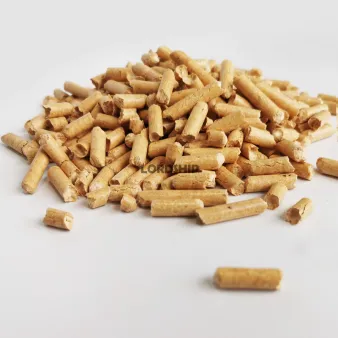As a cat owner, you have plenty of options when selecting litter for your feline friend’s litter box. While traditional clay-based litters are often sufficient for many pet parents, alternative options like pine pellet cat litter are becoming increasingly popular.
Like any product, pine cat litter has its advantages and drawbacks. In the guide below, we’ll walk you through some of the key pros and cons to help you decide if it’s the right choice for you and your cat.
1. Non-Toxic, Natural, and Eco-Friendly
One of the biggest benefits of pine cat litter is that it’s non-toxic and safe for both your cat and everyone in your household. Made from all-natural pine pellets, it serves as a healthier alternative to traditional clay-based litters. Unlike some other litters, pine pellets contain no synthetic fragrances, chemical additives, or clumping agents.
Additionally, pine litter is an excellent choice for eco-conscious cat owners. Since it’s often made from recycled wood waste or sustainably sourced pine, no new trees are cut down to produce these pellets, helping to preserve forests and protect the environment.
Healthier for Everyone Involved
Pine litter promotes a healthier environment for both your pets and your family. Thanks to its natural antimicrobial properties, pine helps control and suppress harmful bacteria, keeping your cat’s litter box fresher for longer between cleanings. It produces little to no dust, making it a safer choice for people with allergies or asthma.
Its near dust-free quality is a major reason many pet owners are choosing pine litter over traditional clay brands.
Efficient
Pine cat litter is one of the most efficient and user-friendly litters available today. It requires less frequent complete replacement because it naturally separates clean pellets from soiled material. The soiled pellets break down into sawdust and settle at the bottom, while the clean pellets remain on top. This process minimizes waste and helps you get the most out of your litter, saving you money over time.
4. Flushable and Disintegrates When Wet
Pine pellets naturally break down into sawdust when wet, allowing them to disintegrate easily. This makes many pine cat litters safe to flush down the toilet without the risk of clogs that require professional plumbing. Additionally, pine litter creates less mess and is lighter in weight compared to traditional clay litter.
These are just a few of the advantages of using pine cat litter for your cat’s litter box. However, it’s important to also consider some of the potential drawbacks of pine litter.

1. May Attract Insects
One notable drawback of pine pellet cat litter is that it can attract insects. Some bugs are naturally drawn to pine wood, while others are attracted to organic waste like your cat’s feces.
It’s important to note that the pine litter itself doesn’t cause the insect problem—these pests are usually already present in the home, and the litter simply draws them out. If you notice an increase in insects, consulting a professional exterminator is recommended.
Contains Trace Amounts of Phenol
Pine naturally contains phenol, a substance that can be toxic to cats. However, most pine cat litters undergo a kiln-drying process that significantly reduces phenol levels by evaporating much of it, leaving only trace amounts behind.
These trace amounts are generally considered safe, and many cats use pine litter daily without any negative effects. If you remain concerned, though, there are alternative options available—such as paper or crystal litters—that you might prefer.
Pine Litter Might Be More Difficult to Find
Unlike clay litters—both clumping and non-clumping—which are readily available at most grocery stores, retail outlets, and big-box stores, pine pellet litter can be harder to find locally. You may need to order it online or visit a specialty pet store. However, as pine pellet litter continues to grow in popularity, availability is expected to improve.
4. Not Great for Controlling Feces Odor
While pine pellet litter has a pleasant natural scent and works well at absorbing urine, it is less effective at controlling the odor of feces. The larger pellet size creates more space for odors to diffuse and spread through the air.
Additionally, some cats may not fully bury their feces in the pellets, leaving waste exposed on the surface. The best way to manage this is by scooping solid waste promptly and frequently.
Even the best cat litters can develop odors quickly. To help extend freshness and reduce odor, consider using a quality litter additive alongside your pine pellets.
Conclusion
While clay litter remains the traditional choice for many cat owners, pine pellet litter offers a compelling alternative. Though it may not control feces odor as effectively as clay, pine litter produces virtually no dust and is a safer option for cats and owners with respiratory sensitivities.
In our view, the benefits of pinewood cat litter outweigh its drawbacks. Although it can be less readily available and sometimes more expensive than traditional litter, its eco-friendliness and gentle texture make it worth trying. Regardless of the type you choose, regular litter box cleaning is essential to keep your cat healthy and happy.
Previous: 10 Benefits of Coconut Tofu Cat Litter: Wholesale Options Explained
Next: How Crushed Tofu Cat Litter Absorption Technology Solves Odor Issues
Comments
Please Join Us to post.
0